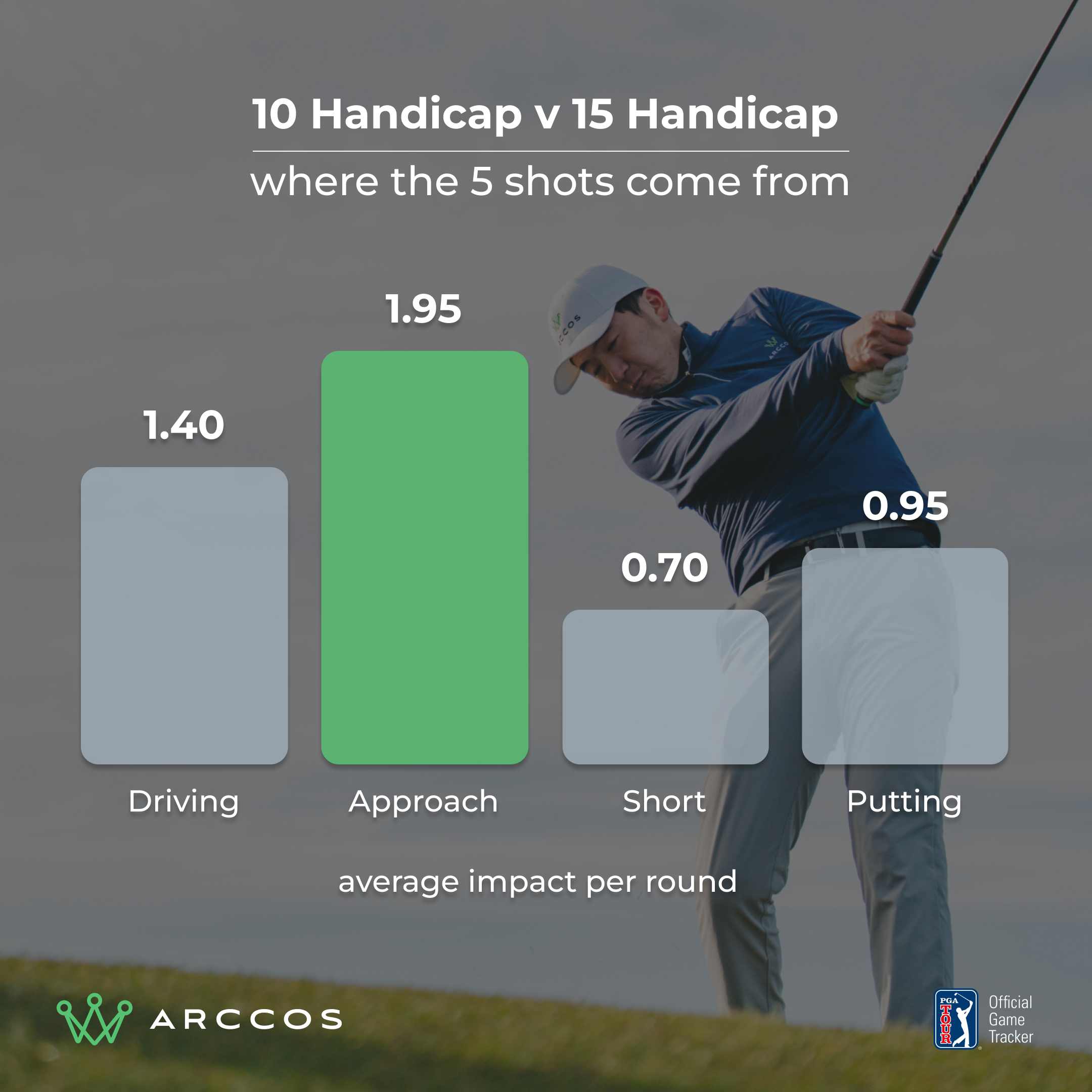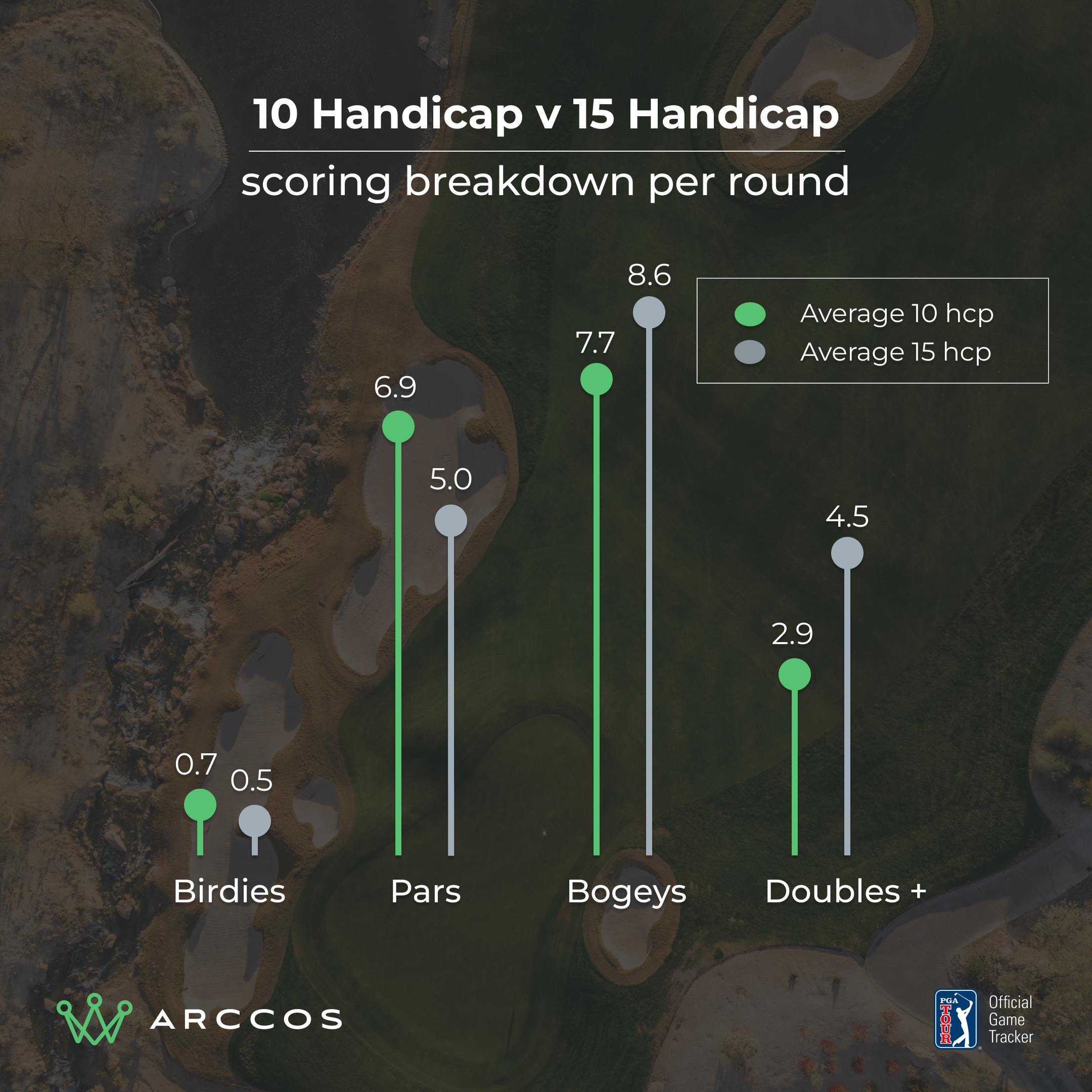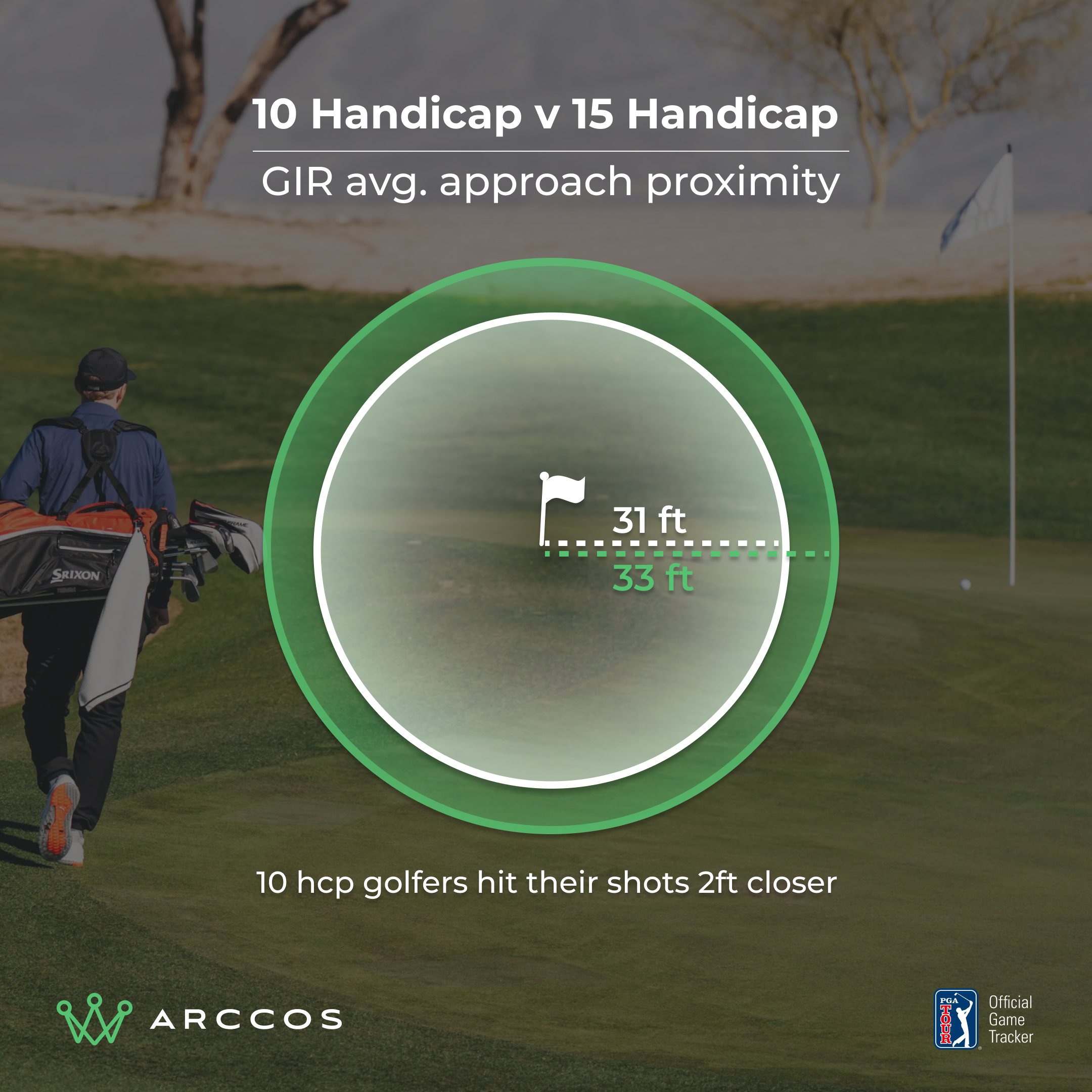
For all amateur golfers, shooting lower scores is the overall goal... and one that can be quite elusive. It's a good idea to read the best golf tips, understand how far you hit the clubs in your bag and work on the fundamentals, like the perfect golf grip, but ultimately much of the improvement you are searching for can be found in the latest Arccos data.
The obvious conclusion would be to make more birdies, but it's not quite as simple as that. In fact, for a 10- to 15-handicapper, there are other aspects of the game that you should be working on to find those gains.
In this article, we share the key areas you should be focusing on to successfully shave five shots off your handicap...
10- vs 15-Handicap: How To Save 5 Shots
It's important to note that irrespective of your handicap index, data suggests that the most effective way to improve your handicap is by improving your long game. Unsurprisingly, this correlates with the path to improvement for a 10- to 15-handicapper, with 67% of the potential gains being found with the driver or on approach to the green.
These areas account for 3.35 of the 5-shot difference, with approach play ranking as the most significant. As you can see in the graph below, approach play accounts for almost two-fifths (39%) of the gap between a 10- and 15-handicapper, with short-game providing less than one stroke (0.7).

There is also a strong link between scoring and handicap index, but perhaps not in the way you might think. Similarly to the difference between a 15- and 20-handicapper, making less bogeys or worse is actually more important than making more birdies.
When comparing a 10- and 15- handicap, the lower-indexed golfer shoots fewer bogeys (0.9) and double-bogeys or worse (1.6), equating to a disparity of around 4.1 shots.
The amount of birdies made is surprisingly close, with a 10-handicapper averaging 0.7 and a 15-handicapper averaging 0.5 per round.

Greens in regulation percentage also presents a stark difference in the data. A 15-handicap golfer hits 27% of greens on average, while a 10-handicap golfer finds an average of 36%.
That equates to a contrast of 1.6 greens per round, and when hitting the greens a lower-handicap golfer will hit it closer to the pin. The data suggests that difference is around two-feet between a 10- (31ft) and 15-handicapper (33ft) on average.

That could be down the fact that it's more likely that the lower-handicap golfer will be playing from the fairway, or that they have achieved a slightly longer tee shot and being closer to the green for their next shot.
Arccos data suggests that a 10-handicapper (46%) will hit the fairway marginally more often than a 15-handicapper (44%), and produce longer drives on average (233 yards) than a player who is indexed five shots higher (222 yards).
The most distinct differentiation between the two profiles of golfer comes down to scoring, and limiting the big numbers on scorecards. Combining that with improved clubhead speed and a focus on the long game will yield the required results to shave those five shots off your index.







